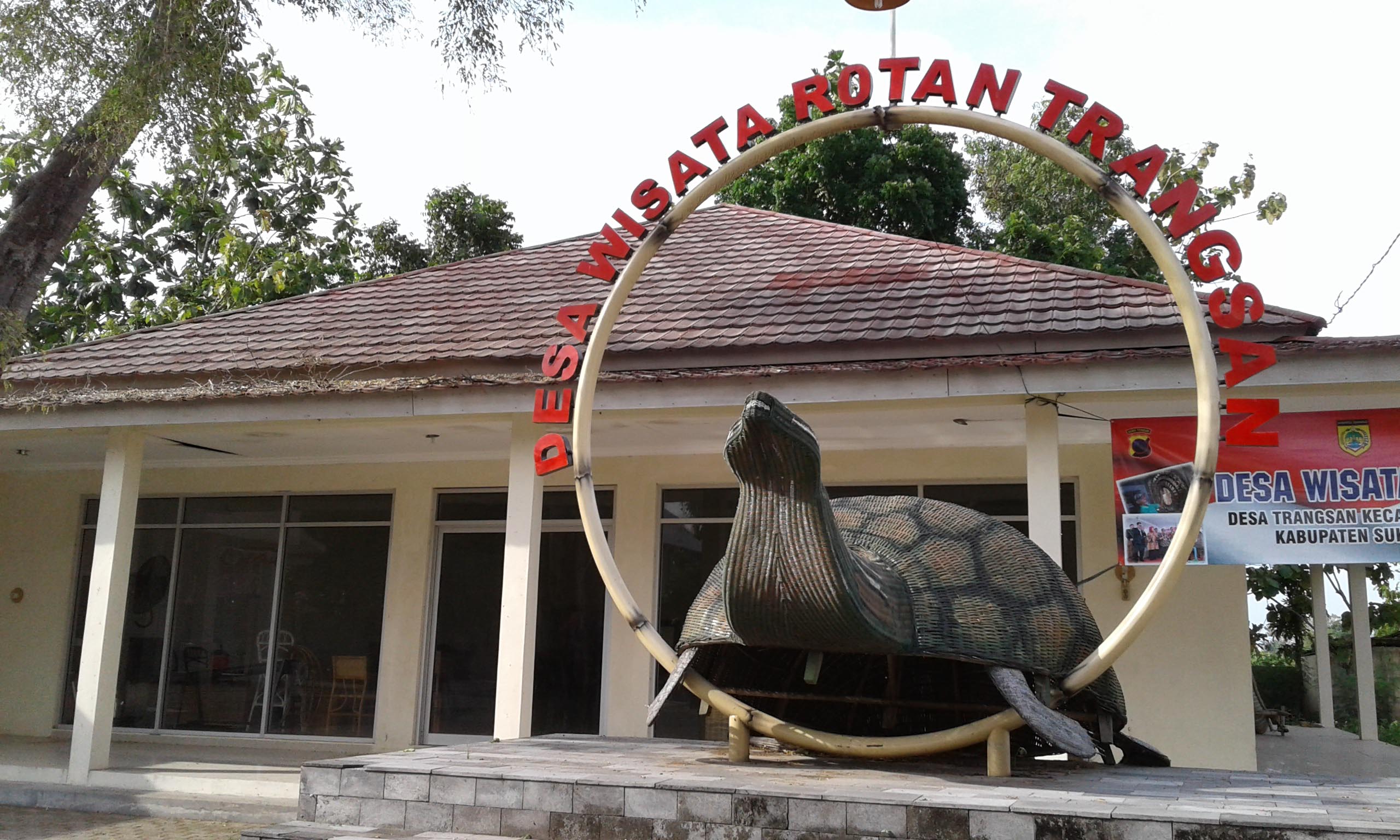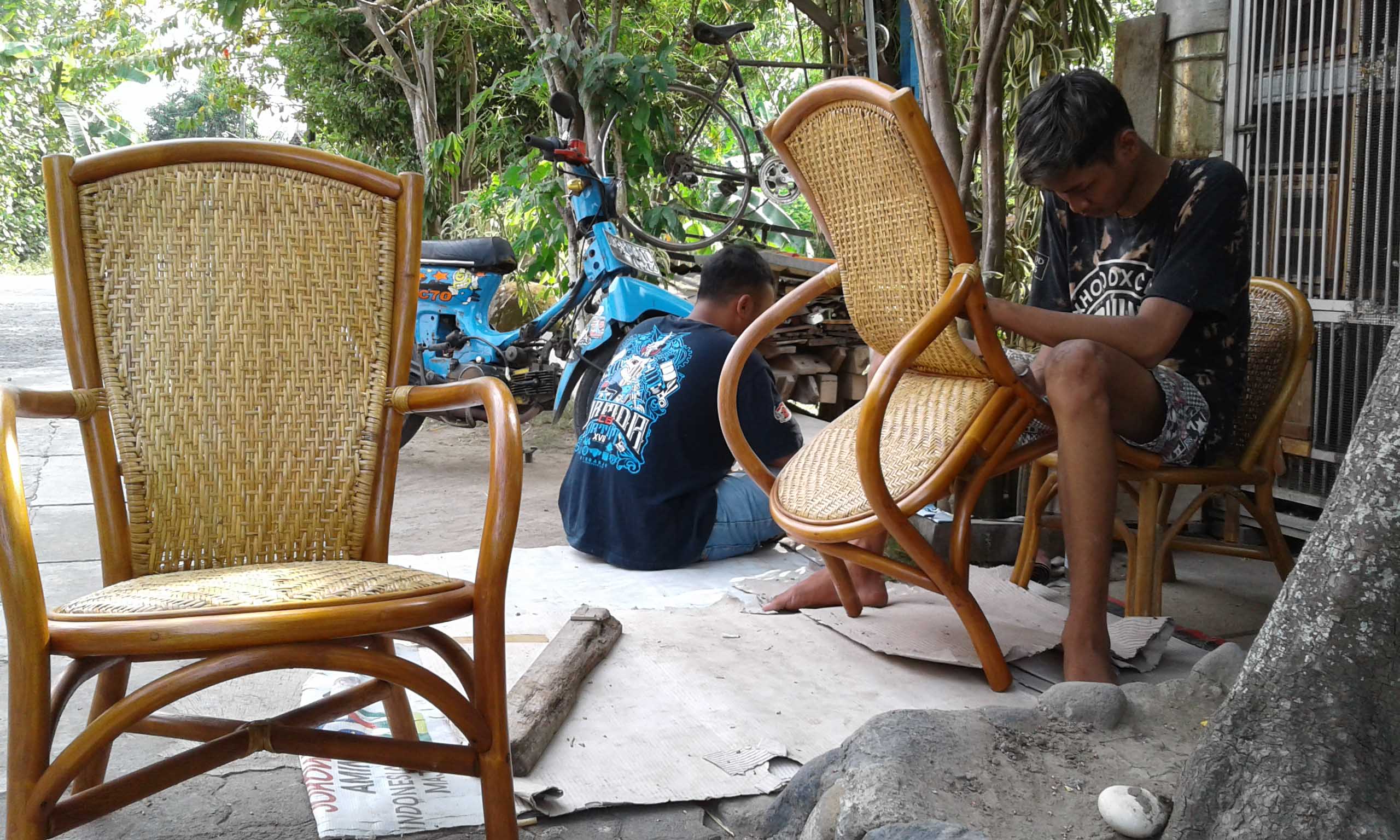Rattan, Special Craft Of Trangsan Tourism Village
Trangsan Village in Gatak District, Sukoharjo Regency is already known as a rattan industry. The village, which is located 10-15 km northwest of downtown Sukoharjo, has been the center of rattan furniture since the 1940s or equivalent to the late Dutch colonial period. Thanks to the helping hand of the Surakarta Kasunanan Palace, the rattan processing industry in Trangsan Village was able to develop and turn into the largest rattan processing industry center in Jawa Tengah as agricultural land began to decrease and the population grew.
Trangsan Rattan Village experienced its peak in the early 1990s to early 2000s. Within a decade, the production of rattan furniture on a small scale developed into a rattan industry until it was ranked in the top 8 furniture suppliers to various countries in 2006. The rattan industry in Trangsan Village also has a positive effect on the economic conditions of the surrounding community and even outside the region such as Wonogiri and Klaten is affected from the employment side.
The weakening of the global economy from 2008 until the decline in demand for rattan furniture in 2015 has given birth to a new idea for the establishment of an education-based tourism village about rattan crafts. The creative idea as an alternative measure was designed by the management of the Manunggal Jaya cooperative and the head of the rattan craft cluster who was accompanied by Bank Indonesia as a form of economic recovery for the slumping micro, small and medium enterprises (MSMEs). The effort to survive the harsh global competition was overcome by launching the "Trangsan Rattan Tourism Village" on October 16, 2016, which is expected to be a pillar of the economy. The community will still receive income from the rattan tourism village even though exports of rattan handicrafts to foreign countries have fallen.
The establishment of the Trangsan Rattan Tourism Village was not long ago, but don't get me wrong, this center of the largest rattan processing industry in Jawa Tengah is serious about developing its tourism economic potential. This is evidenced by the existence of free facilities from residents to introduce to tourists that rattan handicrafts and rattan furniture can also exist in local communities because the quality is not inferior to furniture made of wood. The character of welcome to all visitors is the reason why we have to rattan in Trangsan Village because it provides a valuable experience for visitors.
Until now there are more than 600 people or about 30% of the population of Trangsan Village who work as rattan craftsmen. These skills are generally passed down from generation to generation from families who have always been in the rattan home industry. It is this community's patience that can make rattan handicrafts from Trangsan Village become the superior product of Sukoharjo district even though the raw materials are still imported from outside the region such as Surabaya and several cities on the island of Sulawesi.
The ease of accessing the location and the openness of the local community that allows visitors to see firsthand the process of producing rattan handicrafts from the beginning to the end is unique for the rattan craft industry center in Trangsan Village, which the number of visits annually reaches 6,000-7,000 people with the majority status as students. Another interesting thing that young people should not miss is designing the rattan-based product that they want to buy. Not only household furniture, here visitors are free to design fashion accessories such as bags, make-up boxes, bracelets, wallets, and rattan hats. How? Have you started liking rattan? Schedule immediately! You don't need a paid ticket to enter this rattan paradise in Sukoharjo. (Wiwin)


